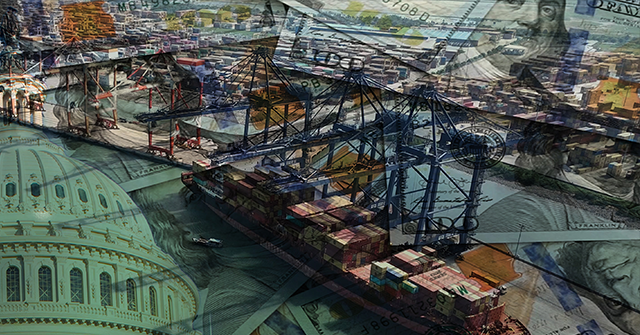Europe Pays the Price of Admission
For years, critics claimed Donald Trump’s tariff strategy would backfire. Tariffs were derided as “taxes on American consumers,” sure to provoke retaliation and disrupt global trade. But now, as the European Union swallows a new trade deal built on a 15 percent tariff floor—with no reciprocal tariffs on U.S. goods—that talking point lies in ruins.
If tariffs were simply taxes on Americans, why are so many European leaders mourning the deal?
According to Bloomberg, the EU accepted a tripling of tariffs on most exports to the U.S. and agreed to cap its own tariffs on American imports at one percent or less. European leaders were not happy. “Economically, this isn’t a good agreement and geopolitically speaking, it is a defeat,” said Arancha Gonzalez Laya, former Spanish foreign minister. Another EU diplomat admitted it forces Brussels to rethink its “place in the global pecking order.”
And yet, they agreed to it.
That’s the part the critics never understood. Even with the new tariffs, access to the U.S. market is still the best deal on the planet. The EU knows it. America is the buyer of last resort, the innovation engine, the energy exporter, the security guarantor. Europe isn’t leaving the table. It’s grabbing a fork and paying the cover charge.
Redefining Trade on Our Terms
We will still run a trade deficit with Europe—even with tariffs in place. That means U.S. consumers will still buy more from Europe than Europe buys from us. So, who’s getting hurt here? Not the American middle class. Not American industry. The tariffs might change who gets to compete and how, but they do not shut off trade. They redefine its terms on our terms.
The real shift is strategic. The United States is no longer offering market access as a freebie. It is turning that access into a strategic asset—a tool to enforce alignment, encourage investment, and restructure supply chains.
This is the opposite of isolationism. It is leveraged integration. The U.S. isn’t abandoning the global economy or the “rules-based” international order. We’re rewriting the rules.
That’s why the EU also pledged to purchase $750 billion in U.S. energy—nearly ten times last year’s level—and promised $600 billion in new investments. Whether Europe delivers is an open question, but the mere act of committing to these figures shows who is setting the agenda.
The message from Washington is simple: The free ride is over. You want in? Pay up.
The Biden-Obama era approach—pleading with allies to share burdens and open markets—produced little. Trump, by contrast, put security, energy, and trade on one playing field and used American leverage to reset the game.
And Europe played.
Why? Because the alternative was worse for Europe. A trade war would have risked not only higher costs for EU exporters, but also U.S. liquefied natural gas (LNG) supplies and even defense commitments. As Bloomberg reported, European diplomats feared that rejecting the deal would “jeopardize the supply of US LNG that helped stabilize European energy prices… and perhaps even US support for the security of Europe.”
This is what the critics never grasped: tariffs are not about walling America off. They’re about building a system in which economic privilege is tied to strategic loyalty.
Europe’s leaders may bristle at the terms. They may call it humiliating. But they signed anyway. Because even at 15 percent, trading with the United States is the best deal going.
And now, they’re finally paying what it’s worth.
Read the full article here


